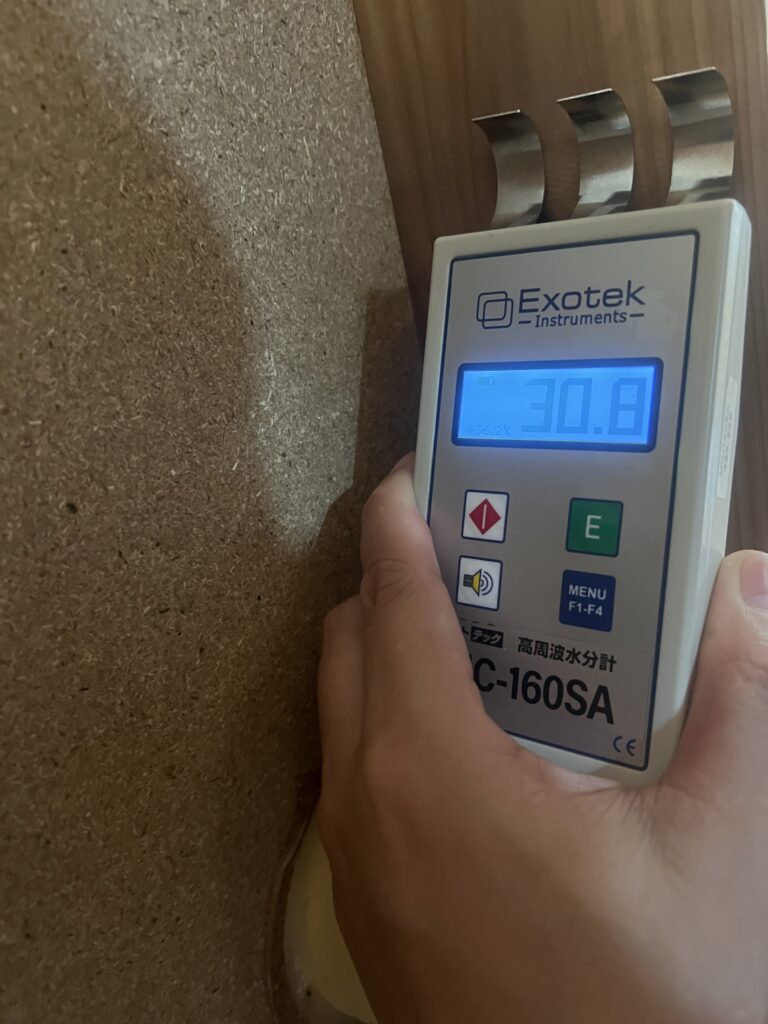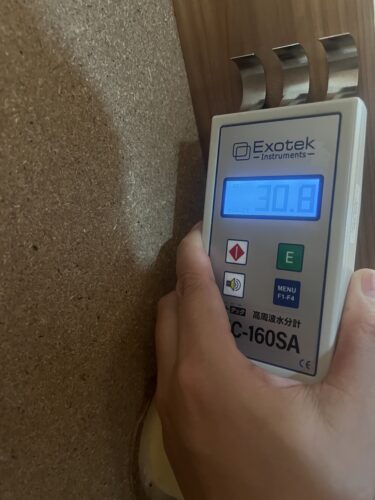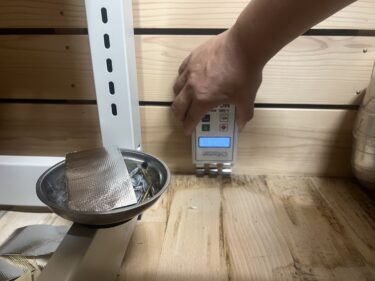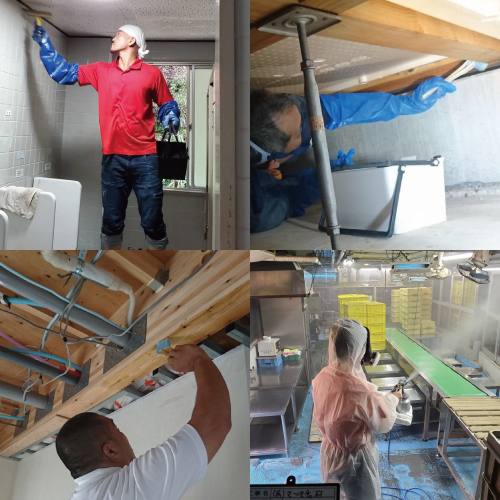Issue raised: Even in expensive investment properties and vacation homes, the growth of mold due to moisture is a hidden risk. This is a particularly serious issue in luxury properties and rentals for seniors, leading to health problems and complaints. What you will learn from reading this article: This article clarifies the mold risks specific to luxury investment properties and provides a comprehensive explanation of how to handle rental complaints, consider the health of the elderly, and how to make use of specialized services. Benefits of reading this article: You will learn practical maintenance methods that prevent repair costs and litigation risks, and protect asset value while maintaining a comfortable and healthy living environment.
1. Mold Risk in Investment Properties & Vacation Homes
Luxury vacation homes and investment properties can easily become moisture traps, creating ideal breeding grounds for mold. These spaces are often underused or poorly ventilated, causing mold to grow unnoticed until damage is significant. Early detection and humidity control are essential to prevent deterioration of both aesthetics and property value.
1.1 High Humidity & the Onset of Mold
Mold thrives in environments where humidity exceeds 60%, combined with temperatures between 15–30 °C and organic nutrients from wood, drywall, or furnishings. During rental vacancies or seasonal non-use, homes remain sealed—leading humidity to rise and establish mold-friendly zones. Climate change in Japan has extended high-humidity seasons, increasing mold risk if ventilation and monitoring are neglected.
1.2 Impact on Asset Value & ROI
When mold appears, it damages surfaces and sends rental prospects running. Repair costs often reach hundreds of thousands of yen or more. Extended vacancies erase projected rental income, disrupting ROI. In worse cases, tenant diseases, property damage claims, or lawsuits can severely harm both finances and reputation.
2. Complaints in Luxury & High-End Properties
In luxury rentals, tenant expectations are high—so even minor mold issues can lead to major complaints, contract cancellations, or even litigation, especially when expensive materials are damaged.
2.1 Tenant & Landlord Responsibility
Disputes often arise over whether mold was caused by tenant behavior (e.g., poor ventilation, indoor drying) or property defects (e.g., condensation from poor insulation). Clear tenancy agreements outlining ventilation duties and reporting obligations, as well as scheduled inspections, can prevent conflicts.
2.2 Repair Costs & Legal Risks
Luxury materials—solid wood, lime plaster, bespoke finishes—are vulnerable to mold and expensive or impossible to restore. Tenants may seek compensation for damaged features, health effects, or stress. Writing on real estate forums often warn: even small mold spots can prompt online reputation damage and deter future tenants.
3. The Dangers of Mold in Senior Housing
For elderly residents, mold isn’t merely unsightly—it can seriously harm respiratory health and overall well‑being. Those with compromised immune systems are especially at risk.
3.1 Health Hazards for Seniors
Mold spores are inhaled, triggering allergic rhinitis, asthma exacerbation, chronic bronchitis, and even producing mycotoxins that suppress immunity. Seniors, especially those who are bedridden or spend long hours indoors, are particularly vulnerable to prolonged exposure.
3.2 Invisible Indoor Air Pollution
Mold-related pollutants are not always visible. Closing windows to trap heat in winter or prevent mosquitoes can increase airborne spores and MVOCs. Installing air purifiers, measuring indoor air quality, and utilizing advanced mold remediation methods can significantly reduce these hidden health hazards.
4. Invisible Mold & Indoor Air Contamination
Mold doesn’t just grow on walls—it releases spores and volatile substances into the air, which can be inhaled and cause health issues even when no visible colonies exist.
4.1 Spores & MVOCs in the Air
Microscopic spores float, triggering respiratory symptoms from allergies to asthma. MVOCs, microbial volatile compounds, can induce headaches, chronic fatigue, or sensitivity reactions—especially harmful for children, pets, and the elderly. Overuse of fragrances or antiseptics may worsen air quality.
4.2 Fungal Testing & ESA-Based Assessments
Professional testing—air sampling, surface cultures, moisture analysis—provides data-driven insight into hidden mold hazards. These diagnostics enable targeted remediation, avoiding unnecessary blanket cleaning, and ensuring a lasting, healthier indoor environment.
5. Reactive Remediation vs. Preventive Maintenance
Once mold emerges, remediation becomes costly and invasive. Preventive maintenance, by contrast, offers significant cost savings and maintains aesthetic and structural integrity.
5.1 Cost, Time & Material Impact of Remediation
Efforts to remove mold often involve tearing out drywall, replacing insulation, repairing finishes—projects that can take weeks and cost hundreds of thousands of yen. Value from quality materials is lost, and improper repairs can reduce resale potential.
5.2 Prevention: Ventilation, Dehumidification & Insulation
Install automatic ventilation systems, maintain dehumidifiers, and improve insulation. Regular MIST® mold-control treatments, which deliver safe anti-microbial agents deep into surfaces, prevent recurrence. These routine actions are inexpensive compared to full remediation.
6. Best Practices for Ongoing Rental Maintenance
Managing multiple rental properties requires consistent vigilance and well‑defined maintenance protocols to ensure long-term performance and tenant satisfaction.
6.1 Lease Clauses & Clear Repair Protocols
Include tenant obligations for ventilation, moisture reporting, and proper care in the lease. Define responsibilities and remedies for mold and moisture damage. Partner with trusted contractors to ensure prompt, quality responses to tenant reports.
6.2 Scheduled Inspections & Tenant Education
Regular walkthroughs can catch mold or moisture issues early. Develop guides for tenants on humidity control—such as using exhaust fans, avoiding indoor drying, and opening windows. Educated tenants help maintain property health.
7. Professional Mold-Remediation Services
When mold penetrates behind walls or into structural materials, professional intervention is essential. Effective treatment requires inspection, clear recommendations, and specialized technology.
7.1 Fungal Surveys & Moisture Mapping
Experts perform air sampling, surface swabs, and moisture readings to locate hidden mold and identify moisture sources. Knowing exact mold types and affected areas allows precise interventions.
7.2 Specialized Techniques like MIST®
MIST® introduces a fine mist of mold-fighting agents into surfaces without scraping or damaging them. Safe for humans and pets, it preserves delicate materials while eradicating mold. The process also includes long-lasting anti-mold treatments.
8. Seasonal Mold Management Strategies
Japan’s humid summers and winter condensation present significant mold challenges. Tailored strategies by season are key.
8.1 Rainy Season & Humidity Control
During the rainy season, humidity often exceeds 80%. Dehumidifiers, keeping ventilation systems running, using humidity indicators, and circulating air with fans or vents are effective controls. Smart home systems can further automate these measures.
8.2 Winter Indoor Climate Management
Cold winters create condensation on windows and walls, triggering mold growth in hidden areas. Keep indoor humidity at 40–50%, use thermal insulation film or upgraded windows, and ventilate regularly—even in cold weather.
9. Long-Term Anti-Mold Measures After Remediation
After mold removal, long-term prevention is vital. Without it, mold can quickly return and re-infest the space.
9.1 Persistent Effect of Anti-Mold Treatments
Anti-mold coatings can repel mold growth for months or even a year. Natural formulations are increasingly effective without the drawbacks of harsh chemicals. Reapplication cycles ensure ongoing protection in vulnerable areas like bathrooms and kitchens.
9.2 Air Purification & Antimicrobial Treatments
High-performance air cleaners filter spores, while antimicrobial sprays neutralize airborne or surface organisms. Combining surface treatment, air filtration, and MIST® antimicrobial mist provides robust, multi-pronged protection.
10. Balancing Investment Returns with Living Environment
Mold control isn’t just about cleanliness—it’s fundamental to preserving property value and sustainable rental income.
10.1 Maintaining Asset Value Through Mold Control
Regular upkeep of walls, finishes, and structures keeps the asset looking fresh and prevents “mold stigma” that can hurt resale value. A well-maintained property attracts better offers.
10.2 Tenant Satisfaction & Premium Rent
A clean, healthy environment boosts tenant retention in premium rentals. Marketing a “mold-managed” or “healthy air-certified” residence justifies higher rent and generates positive referrals.
For mold removal and mold prevention, please leave it to Mold Busters Osaka and Mold Removal Reform Tokyo and Nagoya.
Mold problems are serious issues that not only impair the cleanliness of the property, but also have a direct impact on health and a decline in property value. In particular, for properties where maintaining high asset value is important, such as luxury rentals, vacation homes, and investment properties, thorough mold prevention measures by professionals and remodeling as necessary are essential. At “Mold Busters Osaka” and “Mold Removal Remodeling Tokyo/Nagoya,” we use our proprietary MIST Method®** to remove mold and protect the environment for the long term through anti-mold treatment. This method is a groundbreaking technology that uses a special mold remover that does not damage the material and is safe for the human body, removing the root cause of mold while preserving the original properties of wood and high-quality building materials. In addition, Taiko Kenso Co., Ltd., which operates us, has deep expertise and a track record not only in mold prevention but also in the remodeling business. In homes that have been damaged by mold once, it is often necessary to remodel the interior and equipment after mold removal. Even in such situations, we have established a comprehensive construction system that can handle both “mold removal” and “renovation” at once, so we can minimize the hassle for our customers and respond quickly and accurately. Taiko Kenso Co., Ltd.’s renovation business provides a one-stop service for interior decoration, water-related matters, insulation renovation, and barrier-free construction for a wide range of properties, including houses, condominiums, and stores. We have received high praise in the industry for our “functional renovation specialized in preventing mold recurrence,” which includes improving ventilation and strengthening insulation performance to suppress mold growth. Our greatest strength is that we can handle everything from mold growth to proposing and constructing renovations. To protect your asset value as a luxury property, a living environment where you can live in peace for the long term, a rental property that generates stable income, and a living environment where you can live in peace for the long term, please contact Mold Busters Osaka and Mold Removal Renovation Tokyo and Nagoya. We will help you restore your precious space to a clean and comfortable space.





